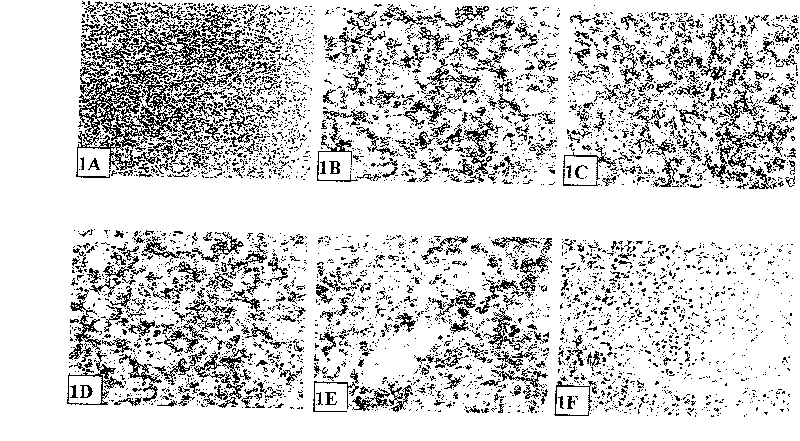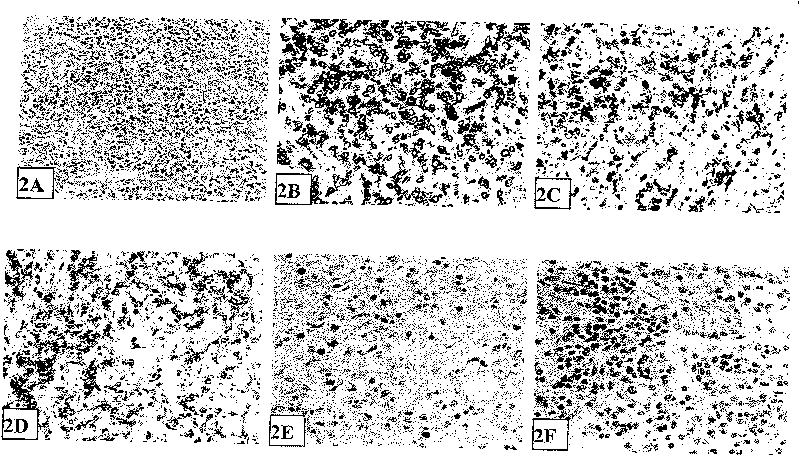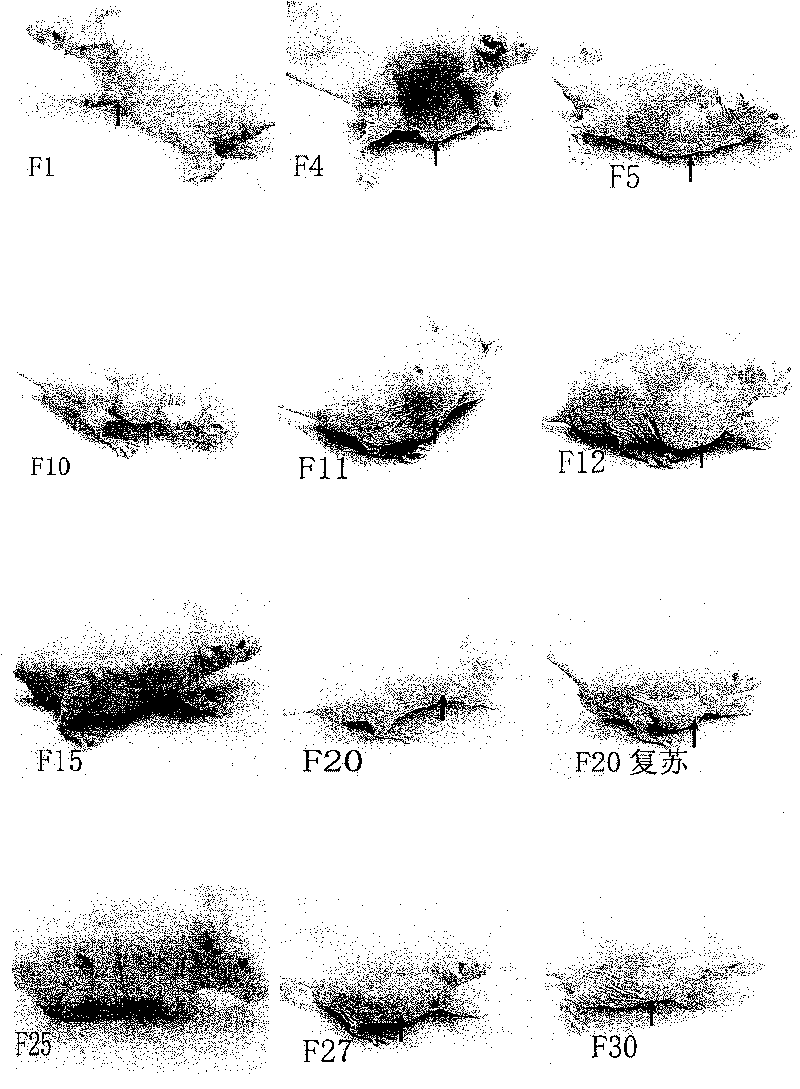Method for establishing extranodal nasal type NK/T-celllymphoma animal model
An animal model, lymphoma technology, applied in the field of biomedicine, can solve the problems of easy pollution, difficult transplantation, restrictions, etc., and achieve the effect of low success rate, accurate results and low cost
- Summary
- Abstract
- Description
- Claims
- Application Information
AI Technical Summary
Problems solved by technology
Method used
Image
Examples
Embodiment 1
[0033] Embodiment 1 uses the method of the present invention to establish the animal model of human extranodal nasal type NK / T cell lymphoma
[0034] 1. Collection and identification of human extranodal nasal NK / T cell lymphoma tissue samples
[0035] One case of human extranodal nasal NK / T-cell lymphoma was collected from West China Hospital of Sichuan University. After pathological examination, immunophenotype and EBER in situ hybridization detection, it was diagnosed as human extranodal nasal NK / T cell lymphoma. The patient received radiotherapy and chemotherapy (CHOP). After 2 courses of treatment, the local lesions disappeared and clinical remission was achieved. The patient went to the doctor again because of fever and stomach discomfort, and was diagnosed with secondary extranodal nasal NK / T cell lymphoma of the stomach. The patient underwent surgery because of progressive pyloric obstruction. The resected gastric tumor tissue was selected and planted under the skin ...
Embodiment 2
[0047] Example two extranodal nasal NK / T cell lymphoma cryopreserved cells resuscitation and passage experiment:
[0048] The frozen tumor cells of the 5th, 6th, 8th, 10th, 16th, 18th, 20th, 25th and 30th passage of the animal model established in Example 1 were taken. Thaw the above-mentioned frozen cells rapidly (within 30 seconds) in a 37-41°C water bath, and then wash the cells 2-3 times with 1640 medium added with penicillin and streptomycin in the ultra-clean workbench, and then adjust Cell concentration up to 10 7-8 / ml, take 0.5ml~1.0ml and inoculate subcutaneously in the forelimb armpits of healthy nude mice aged 3~4 weeks. Note that the passaging operation should be completed within 30 minutes.
[0049] The results showed that the success rate of resuscitation was 100%, and the resuscitation nude mouse transplanted tumor was similar to the growth cycle and tumor bearing situation of the original source tumor (see image 3 ). The classical method generally uses a ...
Embodiment 3
[0050] Example three Identification of human extranodal nasal NK / T cell lymphoma animal model
[0051] (1) Identification items
[0052] 1 Species Identification of Transplanted Tumors in Animal Models
[0053] 1.1 Human gene identification
[0054] Because the human and mouse genomes are highly homologous, the transplanted tumor tissue of the animal model comes from a male patient. The result of querying the gene bank found that the human male sex-determining gene sequence tag site (Sequence Tagged Sites, STS) SY14 has no homology with the mouse. Therefore, PCR technology was used to detect the presence or absence of SY14 gene in transplanted tumors. If the existence of human gene SY14 in transplanted tumors of animal models was proved, it was confirmed that the model was established successfully.
[0055] 1.2 Detection of human Y chromosome by fluorescence in situ hybridization (FISH)
[0056] The probe used in this study is the JAB-Y(DYZ1)(Yq12 SatelliteIII) DNA probe d...
PUM
 Login to View More
Login to View More Abstract
Description
Claims
Application Information
 Login to View More
Login to View More - R&D
- Intellectual Property
- Life Sciences
- Materials
- Tech Scout
- Unparalleled Data Quality
- Higher Quality Content
- 60% Fewer Hallucinations
Browse by: Latest US Patents, China's latest patents, Technical Efficacy Thesaurus, Application Domain, Technology Topic, Popular Technical Reports.
© 2025 PatSnap. All rights reserved.Legal|Privacy policy|Modern Slavery Act Transparency Statement|Sitemap|About US| Contact US: help@patsnap.com



